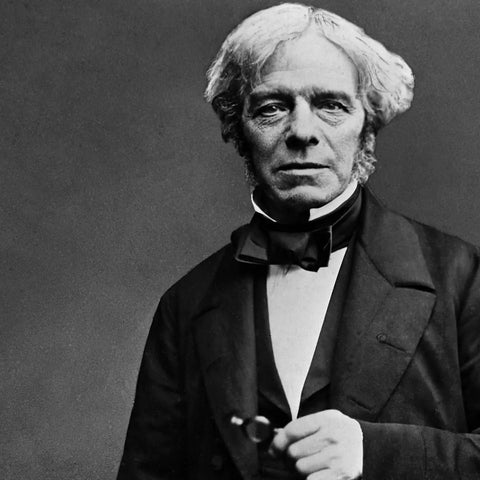"There is not a law under which any part of this universe is governed which does not come into play and is touched upon in these phenomena. There is no better, there is no more open door by which you can enter into the study of natural philosophy than by considering the physical phenomena of a candle."
- Michael Faraday, The Chemical History of a CandleC 25 H 52 + O 2 → C O 2 + H 2 O
^ Chemical formula for complete combustion of a candle
Michael Faraday was an English scientist who contributed to the study of electromagnetism and electrochemistry. In this journal entry we will delve into his lecture series on the "Chemical History of a Candle."
By exploring the combustion of a candle, Faraday acquaints his disciples with fundamental concepts such as mass, density, heat conduction, capillary action, and convection currents. He elucidates the distinctions between chemical and physical processes, exemplifying melting, vaporization, incandescence, and various forms of combustion.
To understand this chemical reaction let us dive deep into the different parts of a candle:
The Wax
Candle wax is the fuel burned by a candle. The wax is a mixture of long-chain hydrocarbons. Typically the composition of the various hydrocarbons averages to C25H52.
The wick
The wick has two functions. First, the wick conducts heat from the flame to the solid wax, melting the wax. Second, the wick transports the molten wax to the flame: the liquefied wax crawls up the wick via capillary action.
The flame
The flame burns the vaporized wax with oxygen supplied by the surrounding air. This reaction releases gases—mainly carbon dioxide, water vapor, and heat.
Combustion is the chemical reaction that produces carbon dioxide and water. Here the vaporized wax burns completely—complete means converting all the carbon in the wax to carbon dioxide rather than carbon monoxide.
Carbon monoxide, a toxic chemical present in soot or the black smoke produced when a candle is burned, results from incomplete combustion. Incomplete combustion occurs when there is insufficient oxygen to fully react with the wax, leading to the conversion of excess energy into soot (black smoke). Several factors contribute to incomplete combustion, such as poor-quality wax, poor fragrance quality, and the type of wick used.
To mitigate inhaling this harmful compound, choose candles from brands that prioritize investment in research and development. Opt for candles made from high-quality natural wax, clean fragrance, and braided cotton wicks to ensure a clean burn.





Comments (0)
There are no comments for this article. Be the first one to leave a message!